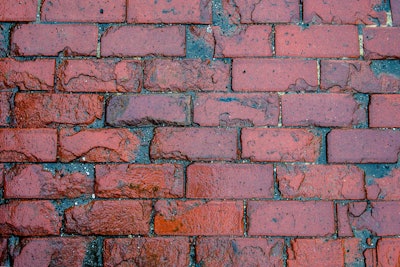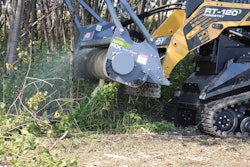 Photo: Holly Welles
Photo: Holly WellesMoisture has been the number one threat to masonry for as long as it's been used as a building material. No matter where people go or what humans build, they will always be fighting rain, snow, dew, humidity, and ice — all of which wreak havoc on structures through the years.
Whether it be cracks, mold, efflorescence, or complete deterioration, all masonry will succumb to the power of water eventually. However, there are several ways people can prolong the life of structures. And as a landscaper, this is one of your prime duties.
Here are a few common water-related masonry issues and how to prevent and manage them properly. 
Cracks
Cracks are one of the most common masonry issues related to water damage. Depending on the size and location of the crack, it could result in a structural collapse. However, builders can prevent cracks from appearing in the first place as long as they can predict what might cause them.
For example, if workers don’t properly compress the soil under retaining walls, uneven foundational shifts may occur, causing cracks and compromising structural integrity. Managers can avoid this serious issue by conducting site investigations and finding a strong, stable foundation before building.
Poor drainage may also cause damage to masonry, especially retaining walls. In this case, standing water near the base of a structure saturates the soil, making it heavier. This puts a greater strain on the retaining wall, and if builders didn’t design it to withstand this extra weight, cracks may emerge.
Prevent this by cleaning gutters regularly and ensuring their drainage spouts are long enough to direct water away from the base of the home. You might also redesign the terrain so that the ground slopes away from the home.
Efflorescence
Aesthetic degradation is also a concern when water comes into contact with masonry work. Efflorescence is just one type of deterioration that can be both unsightly and detrimental to walls, patios, and other structures. It often occurs through incorrect through-wall flashing usage, joint material failure, improper ventilation, and inadequate sealing.
However, three conditions must be present for efflorescence to occur — water-soluble salts, moisture, and the ability of the salt to move through masonry. The resulting effect is a salty, white crystalline layer that covers the surface of the masonry work. Brick is one of the most efflorescent-susceptible materials. Its high permeability allows it to absorb water like a sponge, resulting in crumbling, cracking, and salt buildup, all of which can wreak havoc on a structure.
Prevent these costly issues by taking the time to properly seal the surface with a hydrophobic sealant. Allow it to dry, then apply another layer to ensure the entire surface is covered. And, if the material is already stained, try removing it with baking soda and a solution of acids and vinegar.
Mold
In addition to salt buildup, mold can also form on the surface and even within masonry materials. As previously mentioned, brick is porous, as is concrete. Therefore, it’s essential you take all necessary measures to prevent moisture penetration, like applying sealant.
However, mold can also occur as the sealant wears away and frequent rains or floods soak the masonry. This is often the case with patios that endure rain, sun and organic materials, which together facilitate mold growth.
To combat this issue, spray on a liquid solution of copper, a natural biocide. This will halt the growth of mold. However, a single application will not prevent it from returning forever. So, you must be diligent in applying the solution every so often, especially after excessive rain or dew to prevent it from returning. Avoid power washing, as this will only deteriorate the material and blast away any added colors, causing cracks and allowing for more speedy mold regrowth.
Landscaping applications
Some masonry issues may arise due to a mason’s lack of attention, choice of building materials, or poor workmanship. However, even the best masonry can become damaged if you or the homeowner don’t properly care for it.
The good news is you can prevent many problems so long as you understand how different materials respond to water. In this case, a bit of knowledge and hard work can go a long way in pleasing clients. So, be sure to read up on stucco, cement, brick, and other materials that tend to be more susceptible to water damage.
EDITOR’S NOTE: This article was written by Holly Welles. Welles is a freelance writer with an emphasis on home improvement, business, and commercial real estate. She regularly contributes to sites like Construction Executive as well as publishing weekly updates on her own home improvement blog, The Estate Update.











